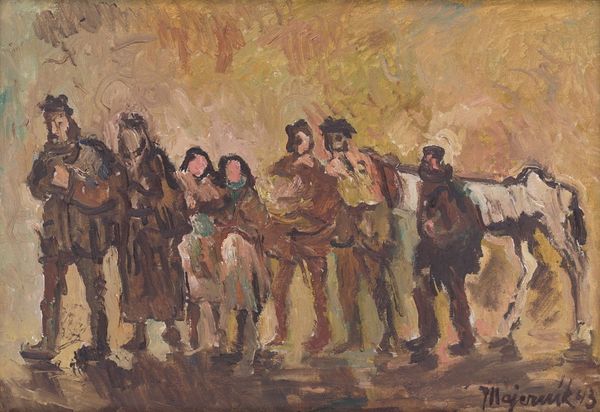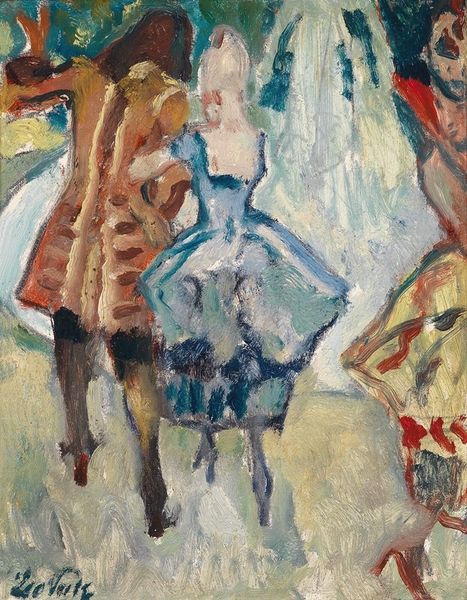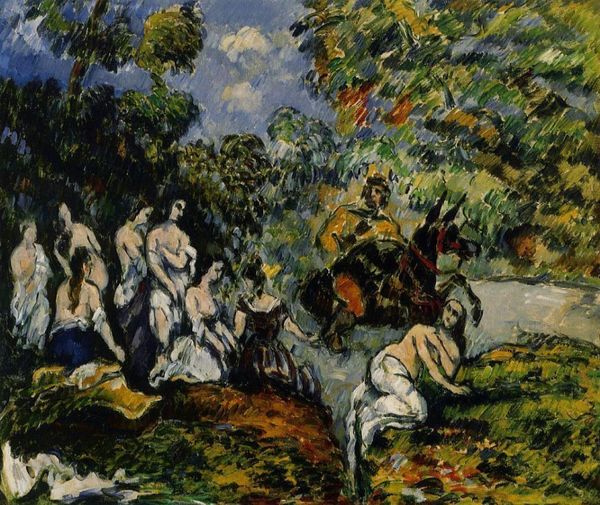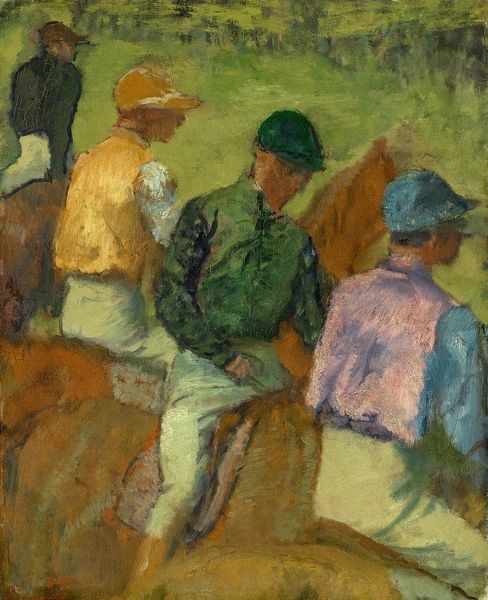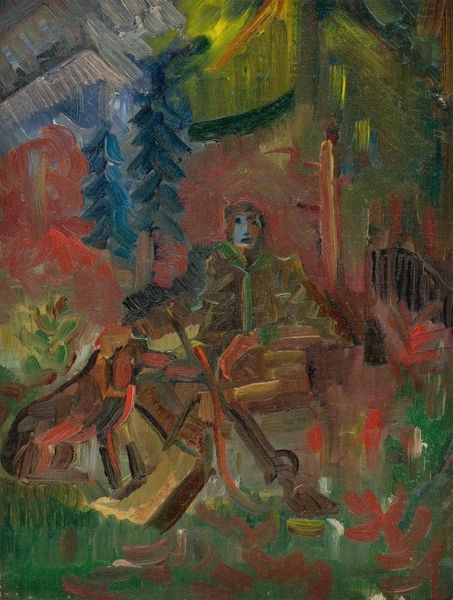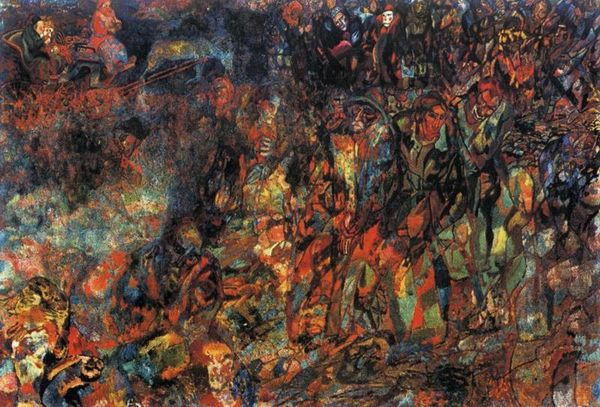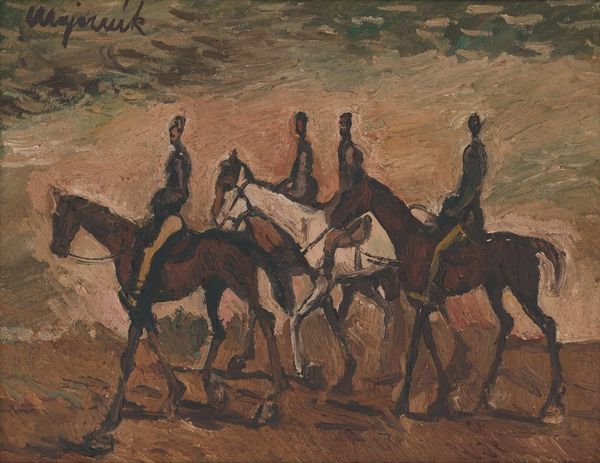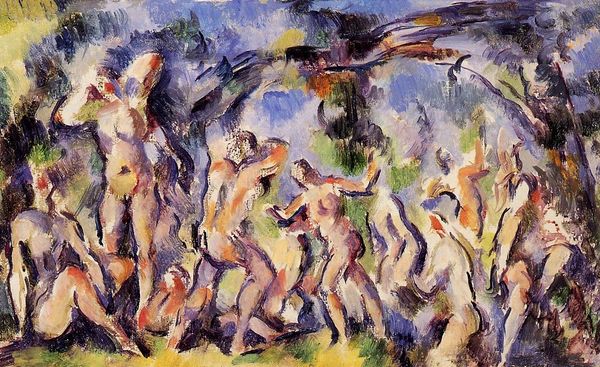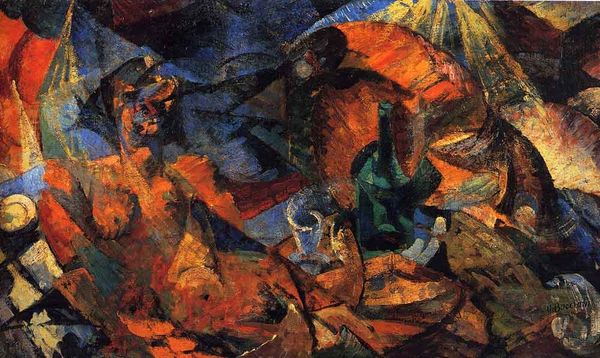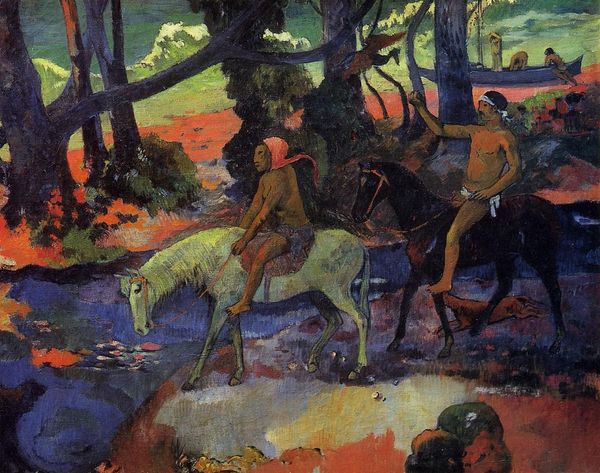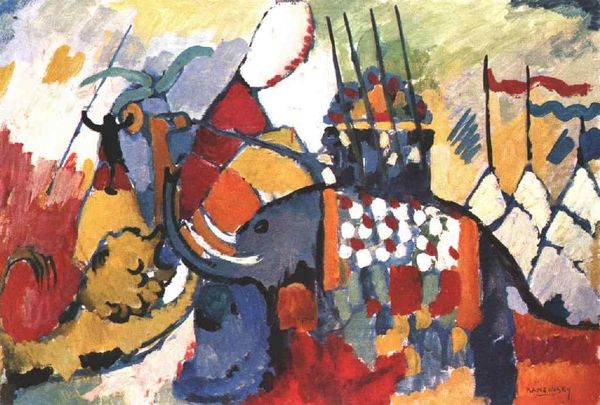
Dimensions: 22.2 x 16.5 cm
Copyright: Public domain
Paul Cézanne painted "Don Quixote, View from the Back" with oil on canvas, though the date of the painting is unknown. Look at how Cézanne used broken brushstrokes of blues, greens, and ochres, creating a tapestry-like effect on a small scale. These daubs of paint build up the figures of Don Quixote, and his company of men on horseback. The painting is divided into distinct, almost geometric shapes. The figures are abstracted, reduced to their basic forms through color and texture. This approach echoes Cézanne’s larger project of reducing nature to its underlying geometric structures—the cylinder, sphere, and cone. In this framework, Cervantes’s tale becomes an exercise in form and structure. It challenges our assumptions of representation, suggesting that meaning comes from structure, color and composition. Notice how the composition flattens the perspective, emphasizing the two-dimensional surface of the canvas rather than creating an illusion of depth. The painting invites us to reconsider the very nature of seeing and interpreting the world around us.
Comments
No comments
Be the first to comment and join the conversation on the ultimate creative platform.
